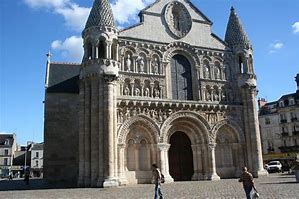
Moorish, Modern and Inspirational describes Spain
Moorish, Modern and Inspirational describes Spain. Find
Moorish arcades, French Gothic styling and Romanesque arches all over Spain.
Enjoy Gaudi's whimsical Modernism movement in Barcelona, the works of Golden
age artist Velazquez and 18th century Goya in Madrid's Prado Museum. Take in
the sights of whitewashed Andalucian villages, the magnificent Alhambra, the
sultan's Palace in Granada and the flower draped balconies in Seville.Discover
Barcelona's Las Ramblas, where cafes, restaurants and shops attract street
performers and flower vendors. The promenade teems withlocal flavors and
scents. Visit Barri Gotic, the city's old Gothis quarter with her narrow
streets and squares dating back to the Middle Ages and the city's 13th-century
cathedral. Drive the seaside Montjuic area and past the 1992 Olympic Stadium.
Next stop Gaudi's whimsical temple, known as Sagrada Familia. This is described
as "Art Nouveau run wild." You can fly to Malaga and see one of the
oldest buildings in Spain perched on a clifftop called Ronda.A stop in Granada
takes you to the Sioerra Nevada foothills in Southern Spain. How about a tour
of the 14th century palace and gardens at Alhambra in Seville? Explore the
massive Renaissance palace of Charles V and the fountain-filed gardens of the Generalife, and continue through the
white washed villages of Andalucia. Seville dates back nearly 2000 years.
Take a horse-drawn carraige ride through Maria Luisa Park
or maybe a walking tour of the Barrio de Santa Cruz and the old streets in the
former Jewish Quarter. Don't miss the Seville Cathedral, the final resting
place of Christopher Columbus and the Giralda Bell Tower.Cordoba reflects a
city that evolved through centuries of Roman, Moorish and Christain influence;
a city once renowned as a center of artistic and intellectual creativity and
religious tolernace. Wlk through the Jewish Quarter and visit the 8th century
mosque which turned cathedral called LaMezquita. A high speed train called the
AVE will take you from Cordoba to Madrid. In Madrid visit the Museo Nacional
del Prado, where one of the finest collections of European art includes
numerous works by Goya, Velazquez, Rubens and Bosch.To top your visit to Spain,
you must not depart without seeing a flamenco show.
Venture into the mountains, stopping at the saw-toothed
mountain of Montserrat, northwest of Barcelona.. Visit the Bebedictine
monastery and see the shrine of la Moreneta, the Black Madonna. The statue was
discovered in the year 880 by shepards who saw a strange light in the sky and
heard music coming from a cave in the mountain. even though this is legend, it
has become one of the most famous pilgrimage sights in Spain. A short drive
from there will bring you to Cardona, the Romanesque Church of Saint Vicenc,
consecrated in 1047. Your drive will tkae you through the snow-capped
Catalonian Pyrenees. There you will find
a 12th century Romanesque Cathedral renowned as the finest in the
Pyrenees. A short drive to Andorraand a Catalan cooking demonstration is not to
be missed.Pamplona, Ernest Hemingway's immortalized town is mentioned in his
book The Sun Also Rises. You can walk the route of the running of the bulls
here and then go on to the coastal town of San sebastian in Basque Country. The
views from the top of Mt. Igueldo are magnificent.Visit the Guggenheim Museum
in nearby Bilbao and venture to medieval Santillana del Mar in the Cantabria
region of Spain.Throughout Spain you will see historic Paradors to stay at. To
be designated as a Parador, a property must have a historic pedigree in the
building it occupies or the setting it is located in. Look for Parador de
Fuente De or Parador de Leon and the Parador de Santaigo de Compostela to give
you that feel of Spain's history.
